The sun goddess Amaterasu rules over the sun and serves as Queen of Heaven. Her legacy touches Japan through the blood of the Imperial family, and there are several places to visit that relate to her story and her power.
There is much to cover to fully understand Japanese mythology, but understanding the importance of Amaterasu at the surface will help you understand why she is so revered as well as help you discover the history of some of Japan’s historic sites.
Etymology
Amaterasu’s name ((天, ama; 照, terasu) translates to “Shines from Heaven”, with 天 meaning “heaven” and 照 translation as “shines”.
Her name is shorthand for Amaterasu-ōmikami (represented in Kanji as 天照大神, 天照大御神, and 天照皇大神). This longhand version translates to “the great and glorious kami who illuminates from heaven”.
Amaterasu has many titles, but the most popular one (Ōhirume-no-muchi-no-kami (大日孁貴神)) means “the great sun of the Kami”. This is a direct reference to the sun goddess’s position as the Queen of Heaven.
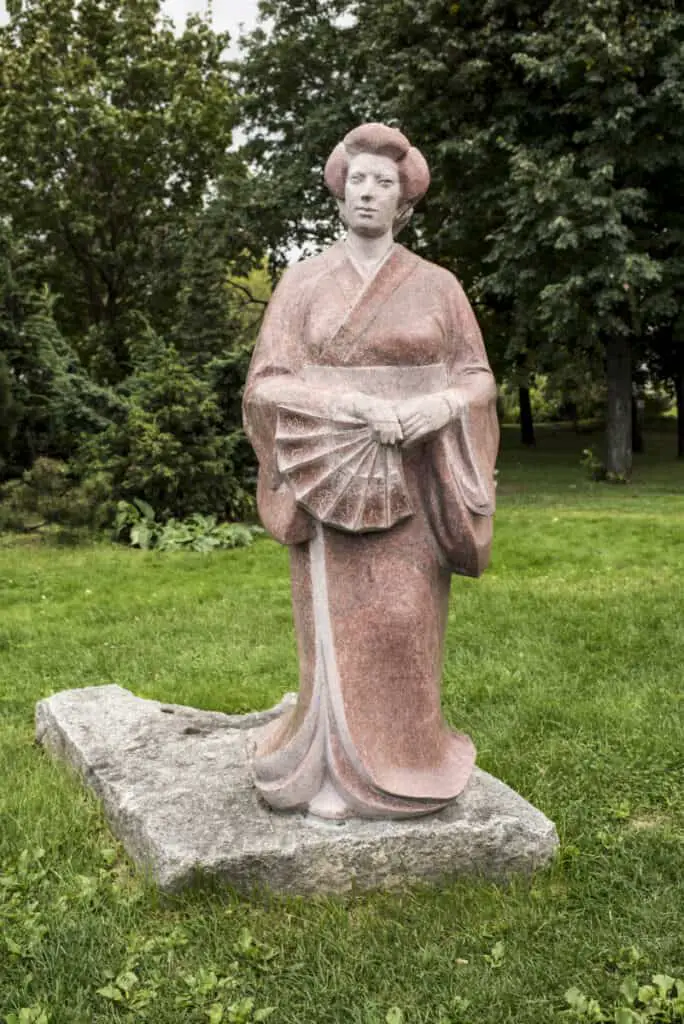
The Many Roles of Amaterasu
Queen of Heaven
In mythology Amaterasu was the first of her siblings to be born from Izanagi, placing her first to inherit the responsibilities of her father. She is also considered Queen of the kami and creation.
Do not mistake this for the goddess of creation. Her role as Queen of creation is inherited from her father, Izanagi, one of the central kami in Japanese creation myths.
He was the original ruler of Heaven, and Amaterasu was gifted most of his power.
Sun Goddess
From the moment she was born Amaterasu took on the role of the sun goddess, and this is her primary purpose in mythology. This rule refers to the literal sun that touches the earth, but it reaches beyond this act.
The sun is what allows day and night to rotate, and it is what encourages plants and crops to grow. It nourishes living creatures and provides the brightness, warmth, and joy needed in everyday life.
The sun is also a symbol for many things, including order and purity. These concepts are two of the most important aspects of Shintoism. Ametesaru helps maintain these concepts as she takes her place at the top of Japanese society.
Imperial Goddess
The Japanese Imperial family is believed to descend from Amaterasu. This claim has long legitimized their position and helped support a natural hierarchy. This connection was especially prevalent in the caste systems of pre-modern Japan.
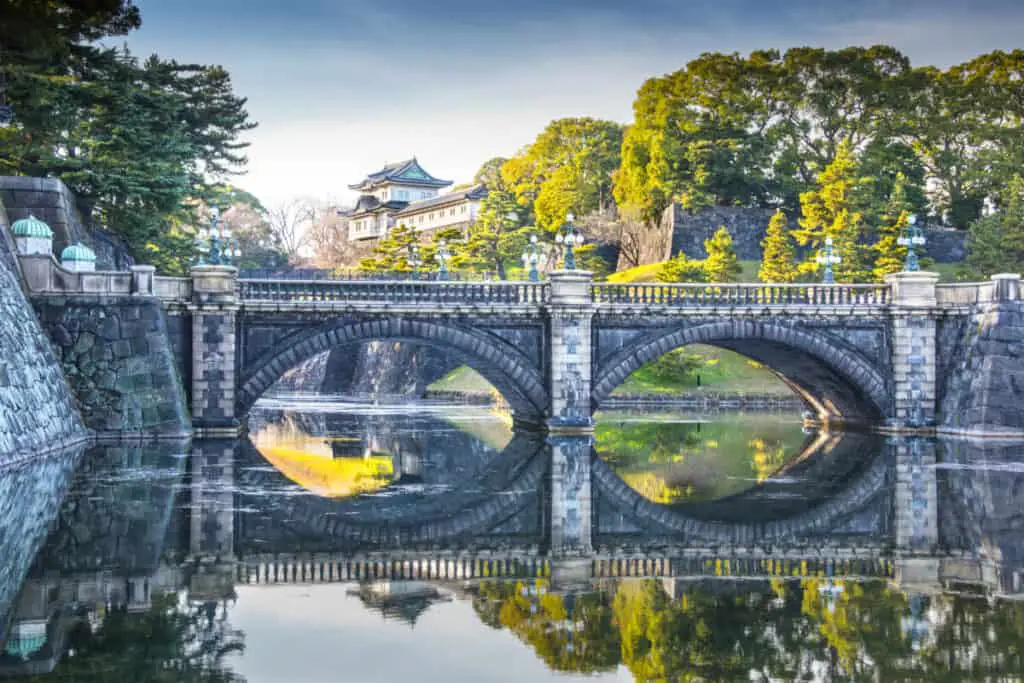
Amaterasu represents both order and justice, and this expectation is placed on the Imperial family as well. They have served as the legitimizing power of Japanese political entities for a long time. This is a direct reflection of Amaterasu’s place as the Queen of heaven and her control over those courts.
The court and justice system on Earth is thus a representation of her divine justice, even though this is not an assigned role. She is the final judge, and she maintains the balance between the natural world and humanity.
Amaterasu and the Imperial Regalia
The Imperial Regalia are three items believed to come directly from Amaterasu herself, and the Imperial family is in possession of them.
Yata-no-Kagami: the Eight-Span Mirror
This sacred mirror is the one used to lure Amaterasu out of the cave she hid in following an argument with her brother Susanoo.
The eight-span mirror was given to Amaterasu’s grandson Ninigi and has been passed down to each generation of the Imperial Family since then. It is supposed to be housed at Ise’s Inner Shrine, which is said to date back as far as 4 B.C. This is considered one of the holiest locations in Japan, and the shrine is dedicated to Amaterasu.
Yasakani-no-Magatama: the Grand Jewel
The Grand Jewel is another tool that was used to get Amaterasu to leave the cave she hid in.
Magatama refers to the comma shape of the jewel, and this was a common form of beads and jewels from about 10000 B.C. to the sixth century A.D.
The Grand Jewel is rumored to be the only remaining original piece of the Imperial Regalia, following rumors that the mirror may have been destroyed in a fire in 1040 A.D. and that the sword was lost at sea.
Yasakani-no-Magatama remains close to the imperial family inside the Three Palace Sanctuaries at the Imperial Palace in Tokyo. The Kashiko-dokoro is the center of these three sanctuaries, and it is dedicated to Amaterasu. This is where the Yasakani-no-Magatama is said to be stored, and it is used in the enthronement ceremony for the Emperor.
Kusanagi-no-Tsurugi: the Grass-Cutting Sword
The sword is a gift given to Amaterasu by Susanoo after she returned from the cave as an apology.
It is said that Susanoo found the sword in the body of the great eight-headed serpent Yamata-no-Orochi, and it has power over the wind.
Kusanago-no-Tsurugi is used in the coronation ceremony of the new emperor, but the sword is covered during the ceremony.
It is housed in Nagoya’s Atsuta Shrine, which is said to have been built 1,900 years ago specifically for this purpose. The shrine is dedicated to Amaterasu, and its buildings are modeled after the ones found at Ise Grand Shrine.
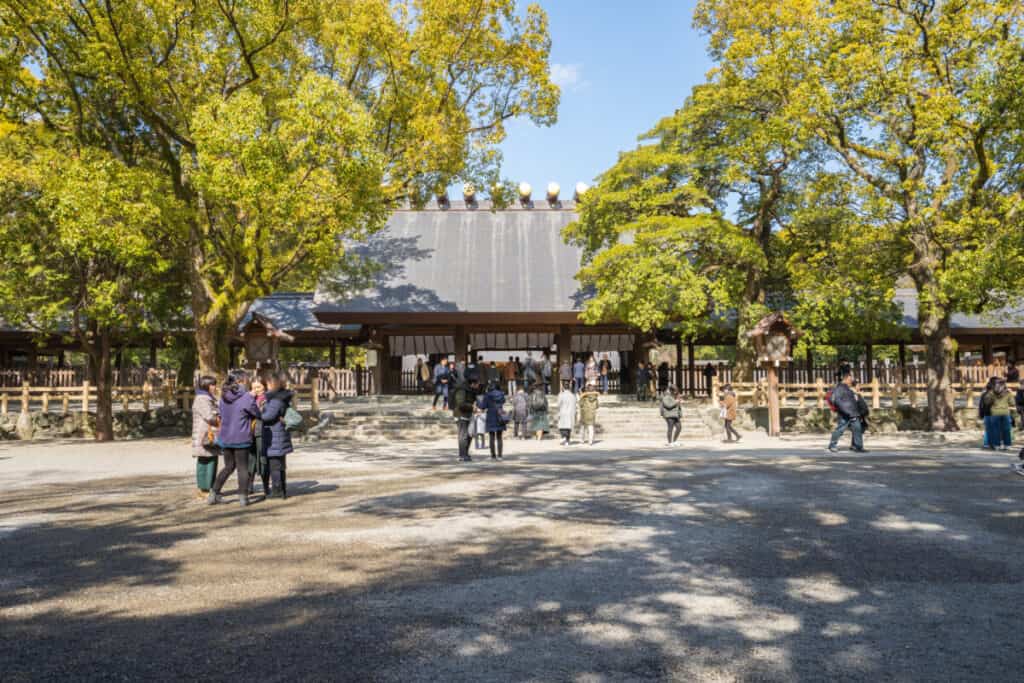
Shrines
Ise Grand Shrine (Jingū)
The Ise Grand Shrine is commonly known as Jingū, and it stands as Japan’s most historically important shrine. It is the official shrine of the Imperial Family, and it is dedicated to Amaterasu.
The shrine also played an important role in pilgrimages throughout the Edo Period from 1600 to 1868.
Many sections of the shrine are only accessible to priestesses and members of the Imperial Family. This requires the shrine’s chief priest and priestess to be of the Imperial Family line.
Ise Grand Shrine Official Website
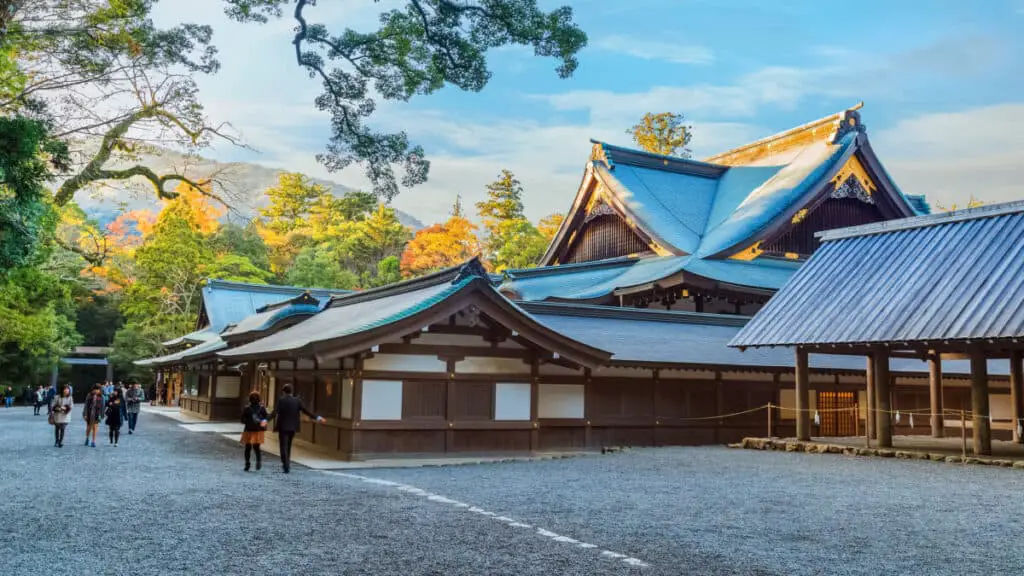
Amanoiwato Shrine
Amanoiwato Shrine is in Takachiho, Miyagi Prefecture. This is said to be near the cave Ameratsu hid in (Ama-no-Iwato) can be found.
The main buildings of the shrine were built on the other side of the Iwato River from the cave. While you cannot enter the cave, you can look across the river to it from a deck behind the main building of the shrine.
Amanoiwato Shrine Official Website
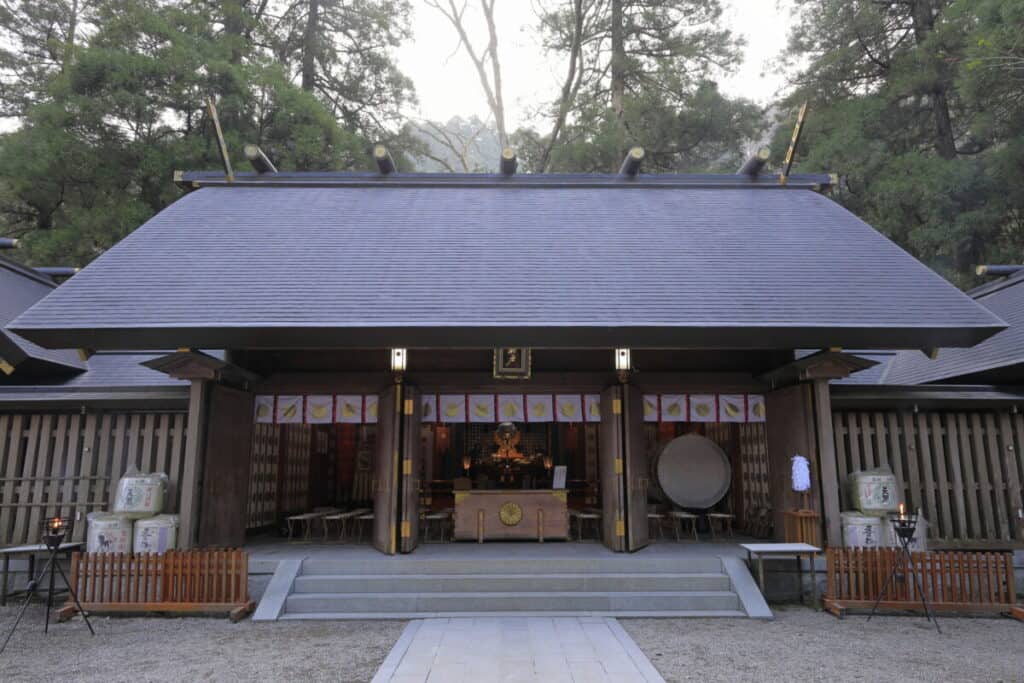
Family
Amaterasu is one of three kami born from Izanagi, and her family includes:
- Izanagi (father)
- Tsukuyomi (brother/husband)
- Susanoo (brother)
The sun goddess has other brothers and sisters born from the marriage rituals of Izanagi and Izanami, but Tsukuyomi and Susanoo were born at the same time in the same way as her.
Amaterasu’s children are believed to be from relations with her husband, but myths are not clear.
Her son, Ame-no-Oshihomimi, is the father of Ninigi, who was given to Japan by Amaterasu. Ninigi brought rice and order to humanity, and his great-grandson Jimmu became the first emperor of Japan from 660 to 585 B.C.
The Imperial Family is descended from this line, and their bloodline can be traced back to Amaterasu reliably from the 7th century onward.
The Birth of Amaterasu
Before the creation of Amaterasu and her brothers Izanagi and Izanami, the divine male and female gods of creation, created the marriage ritual and engaged in sex in an attempt to fill the void in the world.
Their first attempt failed, and the second one created the kami. The last of these kami, fire, ended up killing Izanami, and she was sent to Yomi after her death.
Izanagi traveled to this land of the dead in search of his wife, but when he found her she was rotting, full of oni and maggots. He rejected her and fled.
Izanami pursued in a rage, attempting to follow him out the gates of death. Izanagi blocked this with a boulder and Izanami swore she would kill 1,000 people every day if he left her there. In return, Izanagi said that he would create 500 more than she would destroy every day to allow the population to grow.
After he left her, Izanagi felt disgusted by the taint of death on him. He decided to bathe in Ashihara-no-Nakatsuku at the river mouth of Tachibana in Himuka.
As he washed his left eye he rinsed Amaterasu, a fully grown goddess who shone bright with the light of the sun. From his right eye, Tsukuyomi was born, reflecting the bright light of his sister. Susanoo was born last from Izanagi’s nose as a storm emerged and took the shape of the storm god and ruler of the seas.
Izanagi tasked the three with ruling the heavens, and Amaterasu took her place as Queen of Heaven.
Amaterasu and the Cave
Susanoo was always jealous of Amaterasu’s claim to the heavens as firstborn, and he did not attempt to hide this resentment. This eventually led to banishment by Izanagi, but before Susanoo left he went to bid farewell to his sister.
Amaterasu was suspicious, prompting Susanoo to challenge her to prove his sincerity. Susanoo took her necklace and birthed 5 gods from the Grand Jewel, while Amaterasu took his sword and used it to create 3 goddesses.
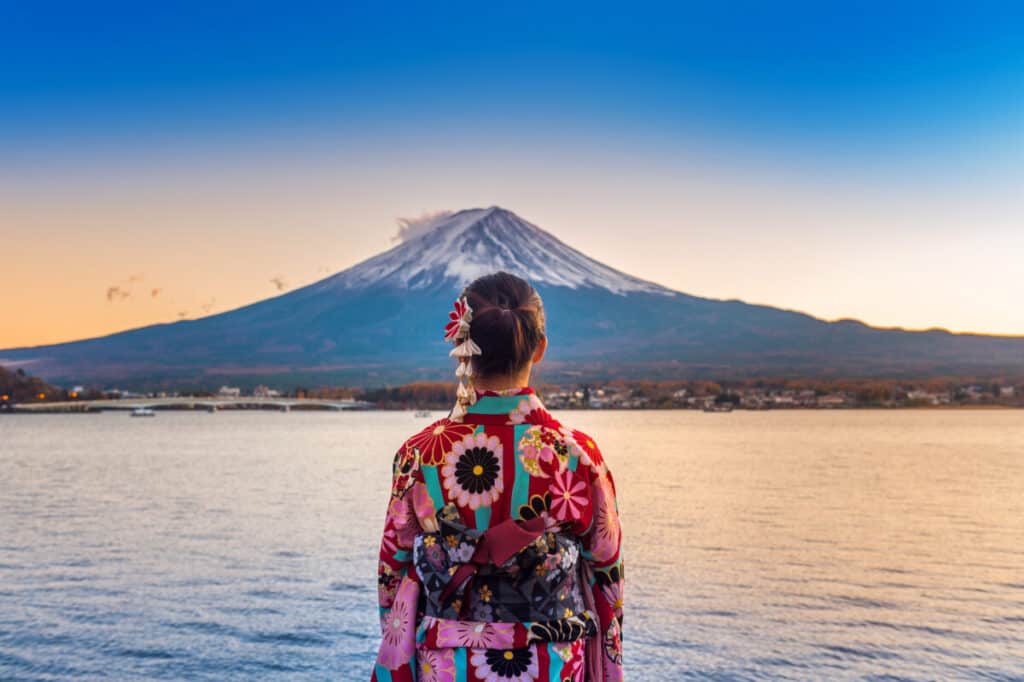
She claimed to win as the owner of the Grand Jewel, setting Susanoo off in a fit of rage. He destroyed much of heaven and Earth, and Amaterasu fled to a cave in shame to have caused such a disaster.
While she hid the world plunged into darkness until the kami decided that they needed to bring her back. When they asked, Amaterasu refused, and she blocked the cave entrance with a rock.
After one year the kami constructed a plan to lure her out with a party. The jovial sounds from the party reached Amaterasu in the cave, and as she drew closer to the entrance she discovered the Eight-Folded Mirror.
When she approached the entrance, Omoikane pulled back the stone and the light of Amaterasu entered the world once again.
The sun goddess was freely forgiven, and Susanoo was still banished. As an apology, Susanoo gifted his sister with the heavenly sword that would one day be a part of the Imperial Regalia.










